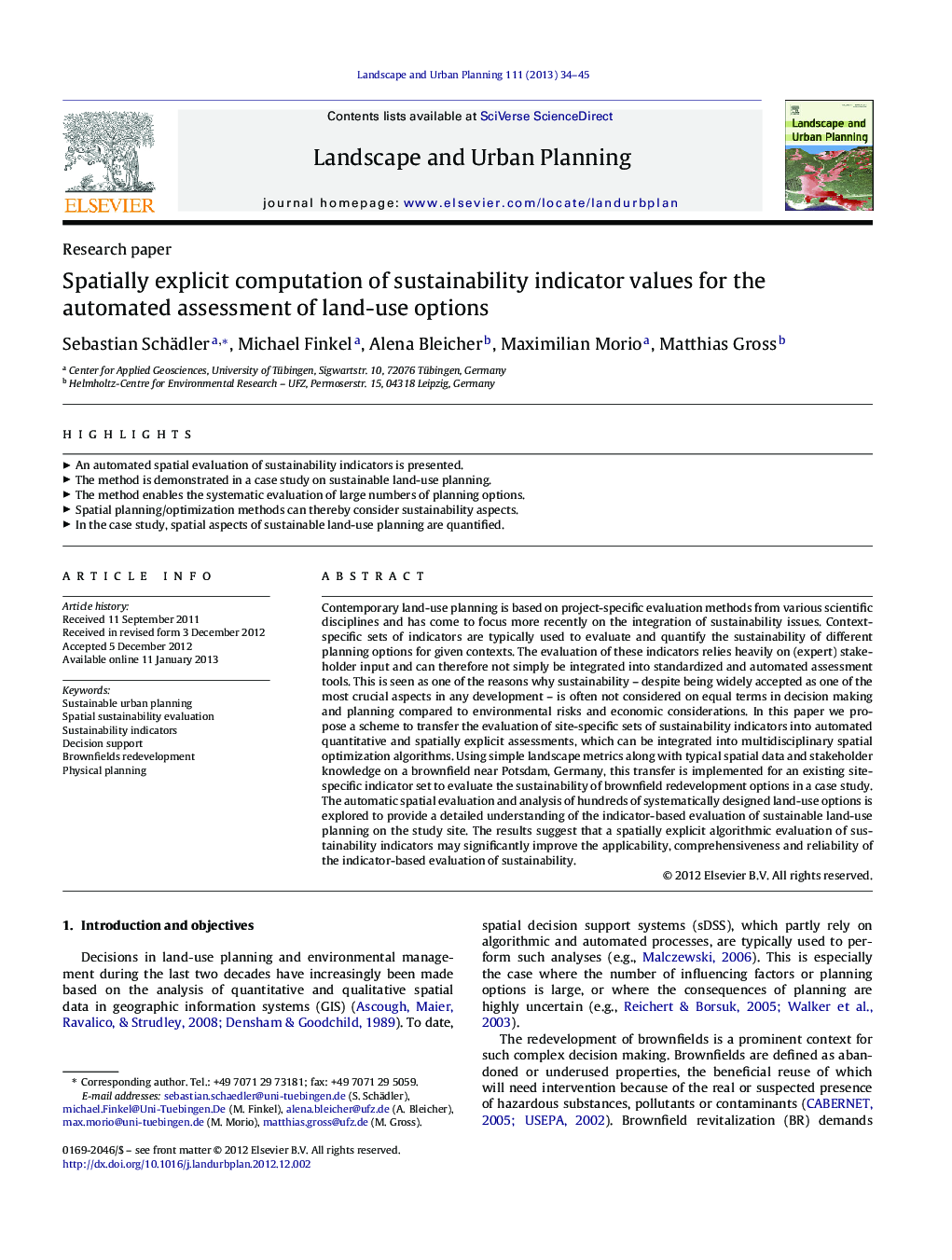| Article ID | Journal | Published Year | Pages | File Type |
|---|---|---|---|---|
| 1049360 | Landscape and Urban Planning | 2013 | 12 Pages |
Contemporary land-use planning is based on project-specific evaluation methods from various scientific disciplines and has come to focus more recently on the integration of sustainability issues. Context-specific sets of indicators are typically used to evaluate and quantify the sustainability of different planning options for given contexts. The evaluation of these indicators relies heavily on (expert) stakeholder input and can therefore not simply be integrated into standardized and automated assessment tools. This is seen as one of the reasons why sustainability – despite being widely accepted as one of the most crucial aspects in any development – is often not considered on equal terms in decision making and planning compared to environmental risks and economic considerations. In this paper we propose a scheme to transfer the evaluation of site-specific sets of sustainability indicators into automated quantitative and spatially explicit assessments, which can be integrated into multidisciplinary spatial optimization algorithms. Using simple landscape metrics along with typical spatial data and stakeholder knowledge on a brownfield near Potsdam, Germany, this transfer is implemented for an existing site-specific indicator set to evaluate the sustainability of brownfield redevelopment options in a case study. The automatic spatial evaluation and analysis of hundreds of systematically designed land-use options is explored to provide a detailed understanding of the indicator-based evaluation of sustainable land-use planning on the study site. The results suggest that a spatially explicit algorithmic evaluation of sustainability indicators may significantly improve the applicability, comprehensiveness and reliability of the indicator-based evaluation of sustainability.
► An automated spatial evaluation of sustainability indicators is presented. ► The method is demonstrated in a case study on sustainable land-use planning. ► The method enables the systematic evaluation of large numbers of planning options. ► Spatial planning/optimization methods can thereby consider sustainability aspects. ► In the case study, spatial aspects of sustainable land-use planning are quantified.
